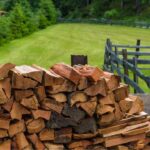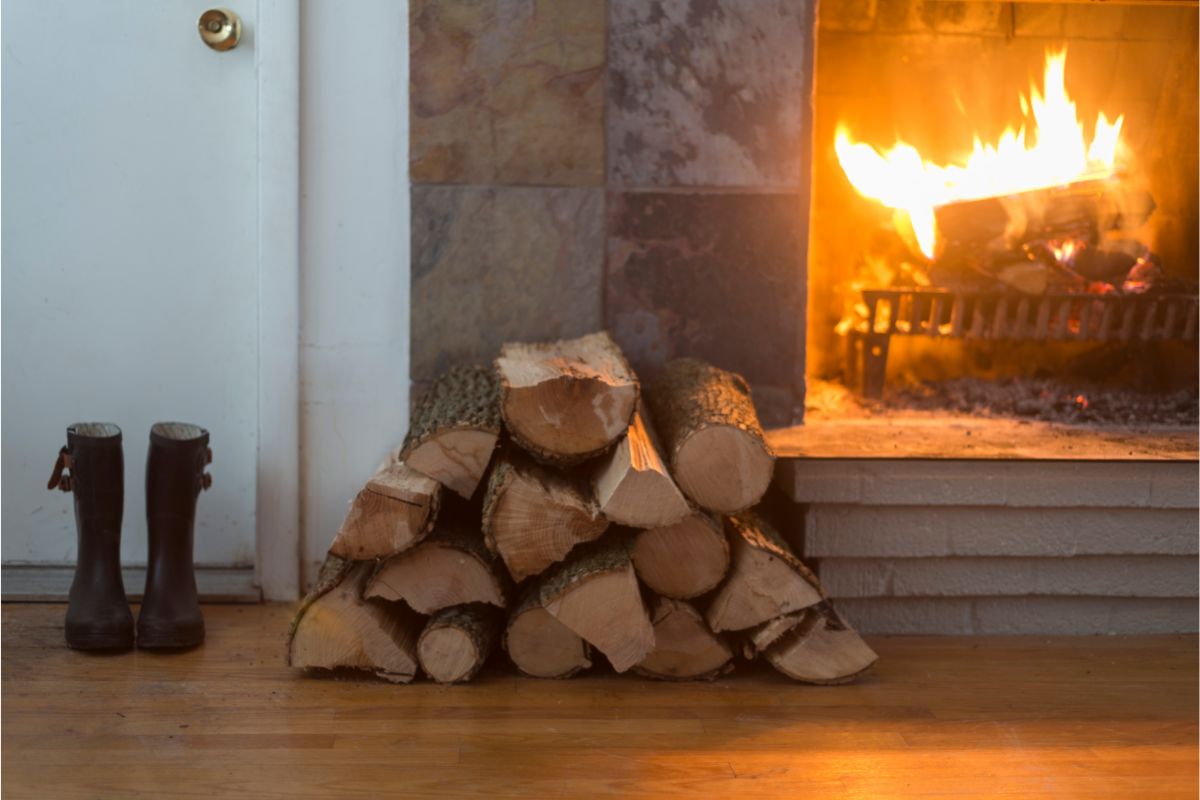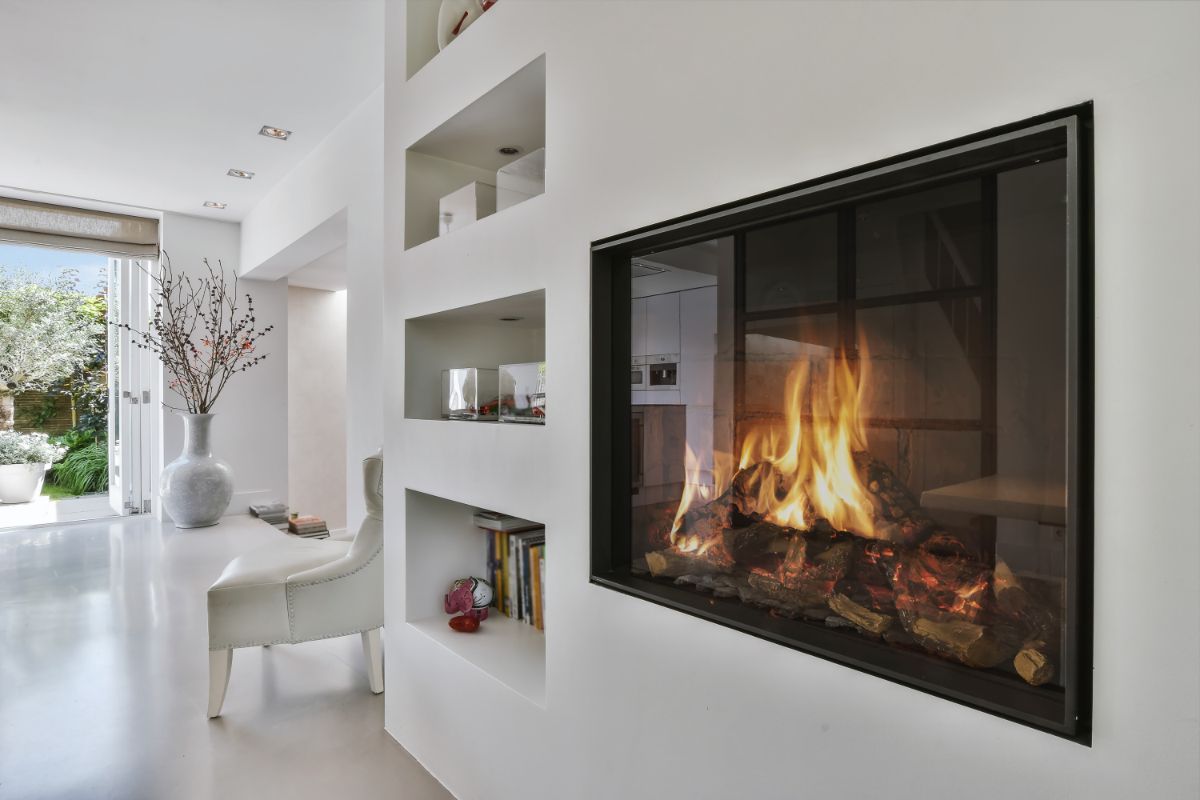Any type of fireplace is certain to augment the aesthetic of a room and boost the coziness factor significantly, but none are so impactful as the traditional masonry fireplace.
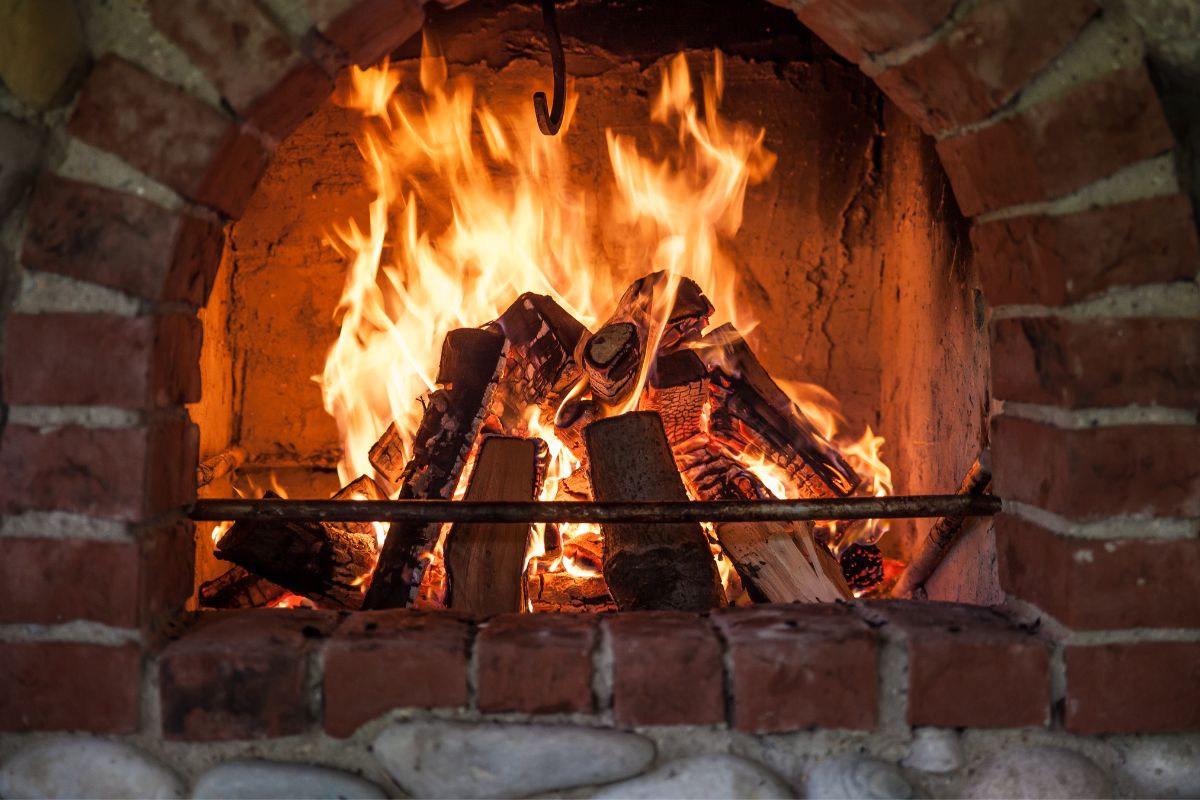
In contrast with discrete designs that are added to a property at a later date, these fantastic structures are an integral part of a building’s architectural blueprint.
What Are Masonry Fireplaces Made Out Of?
Masonry fireplace networks consist of a firebox and chimney constructed from brick, stone, or mortar.
The chimney extends right through to the roof of the house, and it’s constructed alongside all the other structural elements of the building.
This creates a feeling of oneness that gives a masonry fireplace a more striking, rustic countenance, imbuing the home with a warmth beyond the actual heat provided by the fire when lit.
The Masonry Fireplace Network
Let’s take a closer look at the anatomy of a masonry fireplace, moving from the very top of the chimney all the way down to the foundation.
- Mortar Crown
The mortar crown is a concrete section of the structure designed to protect the flue from rainwater.
- Flue
The flue is essentially the top section of the chimney that provides a draft to ensure all the smoke is funneled up and out of the roof of the property rather than filtering out into the room.
- Smoke Chamber
Next comes the smoke chamber, which is a transitional area of a masonry chimney that separates the damper (see also ‘What Is A Fireplace Damper?‘) from the flue. It’s essentially a hot oven-like structure in the chimney cavity.
- Smoke Shelf
The smoke shelf is the base of the smoke chamber. It prevents downdrafts and also catches a lot of creosote.
- Lintel
This noncombustible section stretches across the top of the fireplace opening.
- Damper
The damper is a mechanism used to manage airflow to the firebox beneath and to stop heat escaping up the chimney when the fire isn’t lit.
- Firebox
This is the fireplace itself, a masonry cavity in which you ignite a fuel of your choice.
- Hearth
A hearth is the inner and outer floor of the fireplace. Usually crafted from tile or stone, it holds the fuel and provides a buffer zone to protect the greater room from fire damage.
- Ash Dump
Ash dumps can be found beneath the firebox. As you can surmise from the name, their job is to collect ash in order to make cleanup as easy as possible. Not all masonry fireplaces have an ash dump, but they’re quite handy additions.
- Foundation
Often referred to as the “footing” of a masonry fireplace, the foundation reinforces the entire structure, taking pressure off the adjoining sections of the building.
What Makes Masonry Fireplaces So Great?
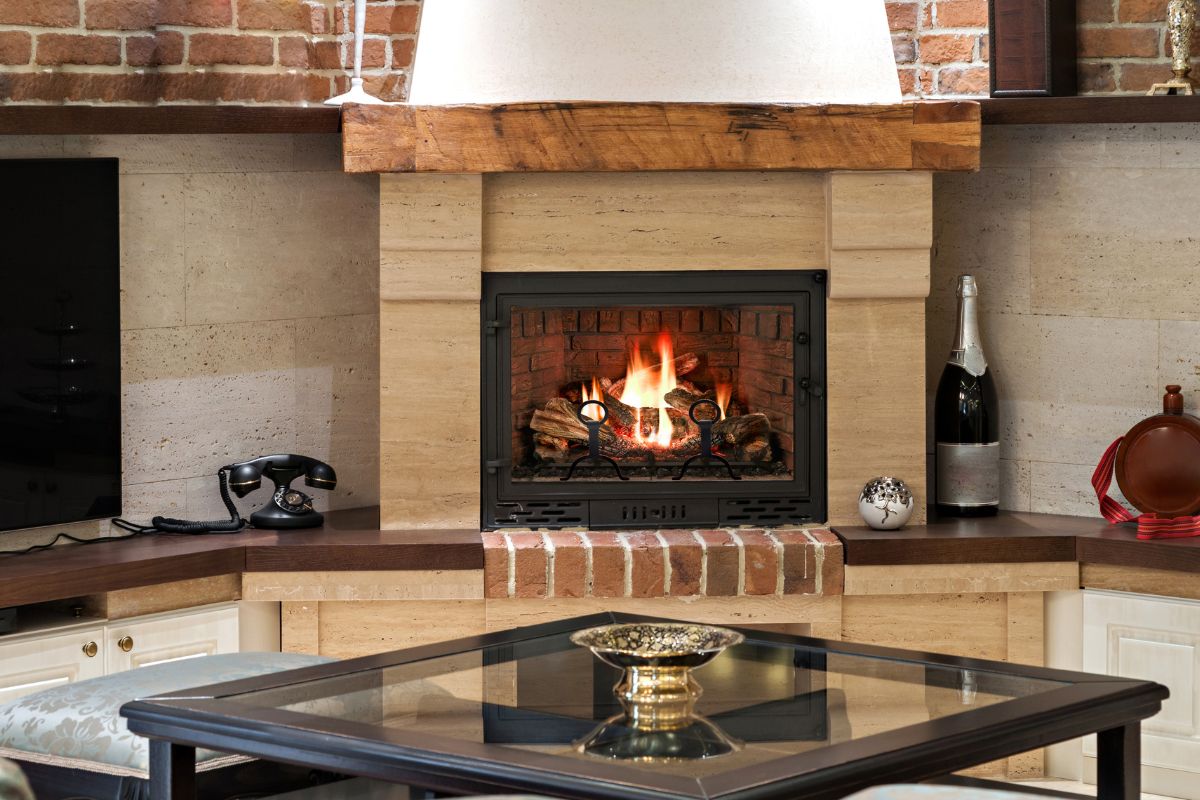
There are many reasons why we still love these traditional fireplaces.
Durability
One of the biggest benefits of masonry fireplaces is their robust build.
They can last decades before they show any sign of disrepair at all.
Eventually, the materials will start to chip or crack, but even then, as long as they’ve had a good clean, they’ll likely perform as well as they ever did.
House Value
Something of a rarity these days, a proper masonry fireplace is sure to grab the attention of potential buyers when you decide to sell your home, increasing the value significantly.
Aesthetic Appeal
No other fireplace can match the rustic appeal of the masonry fireplace, which can make a room more pleasant to inhabit, even when the fire is unlit.
There’s a touch of classicism to masonry fireplaces that can take the feel of a room from nice to remarkable.
Drawbacks Of Masonry Fireplaces
As one of the oldest fireplace formats in the world, needless to say, masonry fireplaces have their downsides, which we’ll explore below.
Energy Efficiency
Despite their popularity and unquestionable aesthetic impact, masonry fireplaces are the least energy-efficient fireplace form of all, as most of the heat generated via wood-burning escapes through the chimney, even with a damper in place.
Once They’re There… They’re There For The Long Haul
It’s easy enough for a professional to switch out one wood-burning stove for another, or to modify a modern fireplace, whether it uses gas or solids as fuel, but if you tire of a masonry fireplace, it’s not so easy to replace.
Being that these fireplaces are part of the actual structure of the building, making any significant changes will be a big – not to mention expensive – job.
Expensive To Install
Just as it’s tricky to get rid of or alter existing masonry fireplaces, installing them poses something of a problem.
Incorporating a masonry fireplace into a structure that was built without one will take some serious work.
It’s an expensive renovation for what will wind up a lot less efficient than some of the much cheaper alternatives.
Can Masonry Fireplaces Be Made More Efficient?
The good news is that you can indeed make a masonry fireplace more efficient with a few modest additions.
Glass Doors
Some well-fitted glass fireplace doors look elegant and prevent heat from escaping through the chimney when the fireplace isn’t in use.
They’ll also stop cold air traveling through the chimney and into the room.
Firebacks
Firebacks increase energy efficiency by retaining heat and radiating it back into the room rather than letting it all escape up the chimney.
These additions are typically made of steel or cast iron, and they can be placed in the floor or against the back wall of a firebox.
Fireplace Inserts
A fireplace insert is essentially a wood-burning stove designed to fit into an existing masonry fireplace, and it’s a relatively easy way to give a classic structure a modern twist, both in terms of aesthetics and energy efficiency.
Final Thoughts
There you have it — masonry fireplaces are fuel-burning structures that are typically built into a house as it’s erected.
They’re as beautiful as fireplaces get, but without some modern appointments, they’re not very energy efficient.
Even so, they’re sure to be the focal and talking point of the room!
Frequently Asked Questions
What’s the difference between a wood burning fireplace in a masonry fireplace?
I don’t think there is any doubt, a real wood burning fireplace with crackling logs provides an ambience and a focal point in a house that’s difficult to beat (if you want more advice about creating an ambience, read our guide here).
A wood burning insert offers more convenience than a real wood burning fireplace offers. It’s easier to maintain and still looks great with much that a real wood burning fireplace offers. But it’s not quite the same, just not as authentic.
- Discover the Ease and Elegance of Zero-Clearance Fireplaces - July 24, 2023
- How to Build a Frame for an Electric Fireplace Insert: A Step-by-Step Guide - July 16, 2023
- Bedroom Fireplace Ideas That Will Make You Want to Snuggle Up - July 16, 2023

